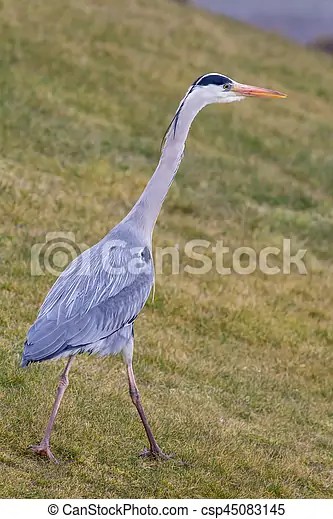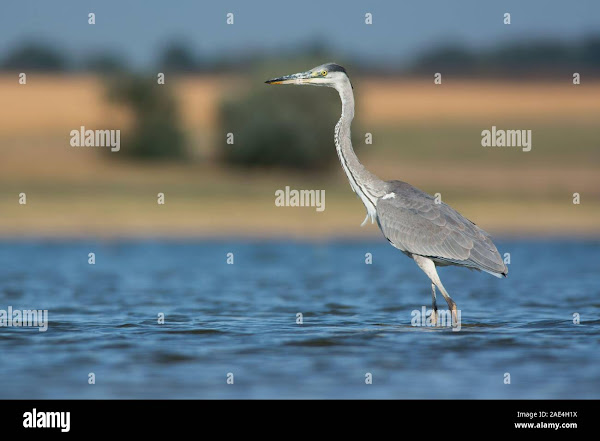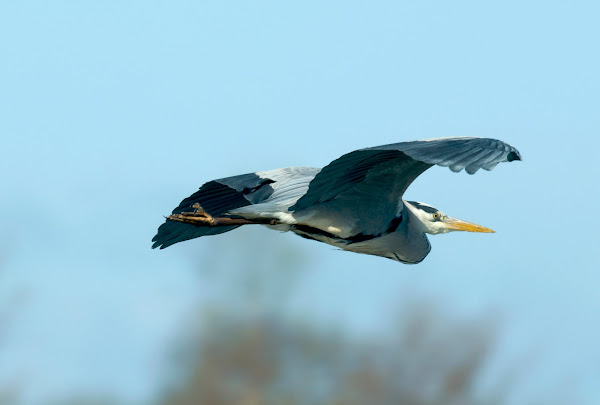The six species of tiger herons (previously called tiger bitterns) are the most primitive herons. They are secretive, solitary birds with cryptic, often barred plumage. A well-known example is the lined, or banded, tiger heron (Tigrisoma lineatum), which is 75 cm (30 inches) in length and is found in central and northern South America. Another is the Mexican tiger heron (T. mexicanum), which is found in Mexico and Central America.
Herons vs. Egrets
Egrets and herons are strikingly similar in several ways. As a result, differentiating them would be one of the most difficult jobs if there is no understanding of the true distinctions between them. Both have long necks, medium-sized bodies, and long, pointed bills. Taxonomists have classified them as members of the same family, and the confusion is exacerbated by the fact that herons and egrets are sometimes lumped together in the same genus. As a result, it is critical to understand the subtle distinctions between them before attempting to separate them.
"long-necked, long-legged wading bird," c. 1300, from Old French hairon, eron (12c. ), earlier hairo (11c., Modern French hron), from Frankish *haigiro or another Germanic root, perhaps from Proto-Germanic *hraigran. Related to Old High German heigaro, Danish hejre "heron," German Reiher, Dutch reiger, and Old Norse hegri), possibly from a shared IE root imitative of the bird's cry (compare Old Church Slavonic kriku "cry, scream," Lithuanian krykti "to shriek," Welsh cregyra "heron," and Latin graculus "jackdaw, The cognate hraga in Old English did not persist until Middle English. Egret is also derived from the same root.
Population of herons
These are some of the most often seen aquatic birds worldwide. The great blue heron of North America is estimated to have up to 5 million mature individuals remaining in the wild, while the grey heron of Eurasia and Africa has up to 2.5 million mature individuals, but some of the rarer species are on the verge of extinction, particularly where habitat is threatened.
Wading Bird Similar To Heron With White Plumage
The word plumage refers to the feathers of a bird, including the color and pattern produced by those feathers. Certain birds exhibit a range of plumages throughout the course of a yearly cycle, while others maintain the same plumage throughout the year. While plumage is often the simplest method of bird identification, it may be problematic when birds change plumages or adopt color variants that are unfamiliar to birders. Types
Namdapha National Park is a protected area with an area of 1,985 kilometers (766 square miles) in Arunachal Pradesh, Northeast India. It is a biodiversity hotspot in the Eastern Himalayas, with over 1,000 floral and over 1,400 faunal species. At 27°N latitude, the national park is home to the world's northernmost lowland evergreen rainforests. Additionally, it has vast dipterocarp woods, forming the northern portion of the Mizoram-Manipur-Kachin rain forest ecoregion. The Eastern Himalayan broadleaf forests ecoregion is a temperate broadleaf forest located in the eastern Himalayas' medium altitudes, comprising sections of Nepal, India, and Bhutan. These woodlands are very diverse in terms of biodiversity.
If you're using a personal connection, such as at home, you may conduct an anti-virus check on your device to ensure it's malware-free.
If you work in an office or on a shared network, you may request that the network administrator do a scan of the network for misconfigured or infected devices.
Herons
Herons are freshwater wading birds that are related to egrets. There are over 40 species of herons. The biggest member of the Ardeidae Family is a heron, specifically a Goliath heron with a body length of about one and a half metres. Green herons measure around 45 centimetres in length, with a wingspan of approximately 90 centimetres, and weigh approximately 300 grams. Due to the changed structure of the sixth vertebrae, they may bend the neck into a distinctive S-shape when flying and stretch it while resting. The bottom portion of the leg is not feathered, and they fly with it backwards. Herons, in contrast to the majority of Ardedians, have a graceful and crisp flight. These carnivorous birds like to rest on higher ground or perch. Their bill forms and thicknesses vary considerably across species. The feathers are delicate and come in a variety of colors, including white, grey, brownish, and blue.
Wading Bird Like A Heron Crossword Clue
You'll be relieved to learn that your hunt for Mirror Quiz Crossword game hints has come to an end right now. That is why this website exists: to assist you in locating the Mirror Quiz Crossword Wading bird comparable to the heron solutions. Additionally, it contains extra information such as tips, handy tactics, and cheats. Our guide is the greatest resource for completing challenging Mirror Quiz Crossword levels. Mirror hasn't stopped at one game; they've made many more as well. If you want assistance with any further levels, please visit the Mirror Quiz Crossword December 31 2021 solutions page.
Here are the solutions to the crossword clue Person who isn't an early bird that will assist you in solving the crossword problem you're working on!
Crossword puzzles may be a wonderful method to train your brain, while also passing the time and challenging yourself. Of course, there are occasions when the crossword clue completely stumps us, whether it is because we are unfamiliar with the subject matter or are just blanking. If you're stuck on Person who isn't an early bird crossword clue, we've got you covered!
Wading Bird Like A Heron
8. Wading Bird Behavior -Wading birds forage in flocks and demonstrate a great degree of patience when standing for extended periods of time waiting for prey. They often maneuver dangerously in order to avoid scaring away their prey. In nature, wading birds are often gregarious, breeding, eating, and traveling in big groups. They establish breeding rookeries and communal roosts, and may sometimes be seen in mixed flocks of waders of various species feeding at the same location or nesting in the same tree. Waders are usually quieter than other birds, which is necessary for their secretive hunting techniques. However, big flocks congregating at a single location may be rather loud at times. The waders often fly in big flocks with their legs fully extended, frequently reaching beyond their tails. These birds' necks may be stretched or constricted, and their neck postures may be critical in identifying these magnificent species.
MiamiandBeaches.com utilizes cookies in order to enhance your online experience. They allow you to take use of certain features and customizations of the site that you would not be able to access otherwise. Review our privacy statement to learn more about how we manage your personal data and your rights. By using MiamiandBeaches.com, you agree to our cookies being used. Accepted.
Purple herons breed across Europe, Asia, and Africa and have a largely palaearctic range. The western race's range extends eastward from Portugal through most of central and southern Europe and portions of North Africa, all the way to Kazakhstan's Lake Balkhash. The species breeds in Senegal, along Africa's east coast, and on Madagascar. The eastern race is found from the Indian Subcontinent eastward to eastern China and the Philippines, and northward to the Amur and Ussuri river basins at around 49°N. The southern species is confined to Madagascar,[10], and some experts see a tiny population of purple herons on the Cape Verde Islands as a distinct race. [8] Birds of the western population fly south to tropical Africa between August and October, returning north in March. Purple herons often surpass their typical range upon return and are considered vagrants in northern Europe, including the United Kingdom. Although the eastern population is mostly permanent, some birds from the northern half of the range migrate south to Korea, Thailand, and Malaysia. African birds are permanent residents. [10]
The Goliath Heron (Ardea goliath) is the biggest heron, standing between 1.4 and 1.5 meters tall, while the Little Bittern (Ixobrychus minutus) is the smallest, standing between 27 and 36 centimeters tall and weighing between 46 and 86 grams.
The plumages of the several species range from white to black, passing through various shades of dark grey, blue, and brown.














